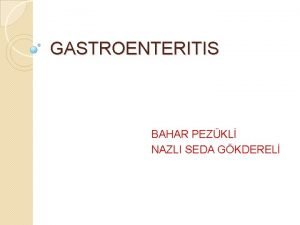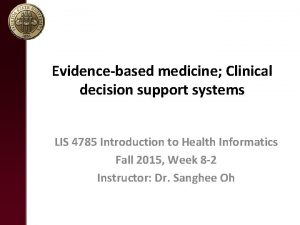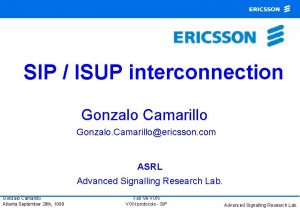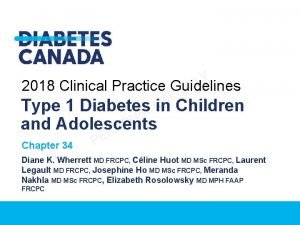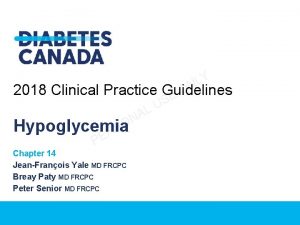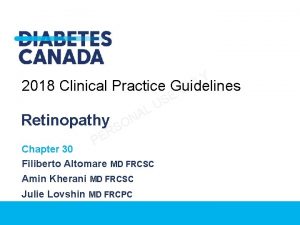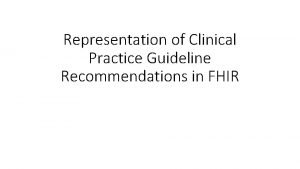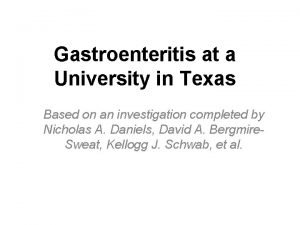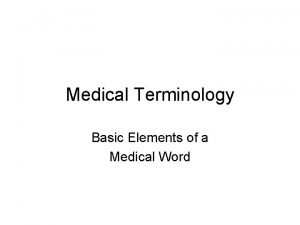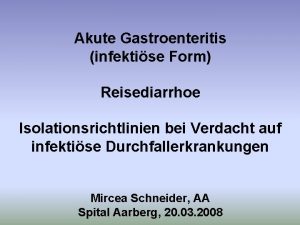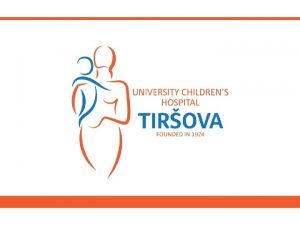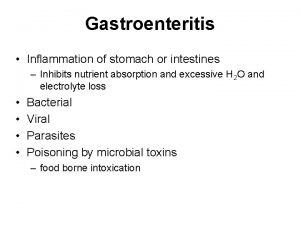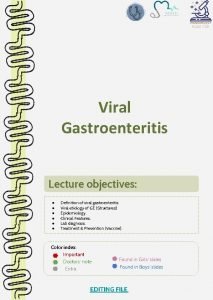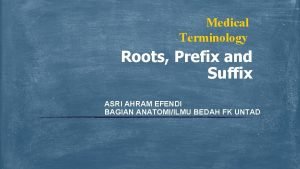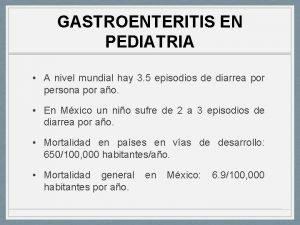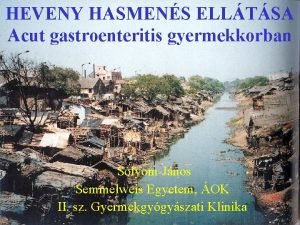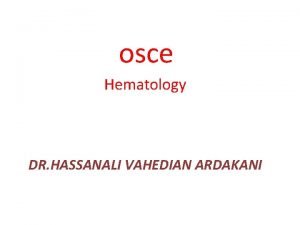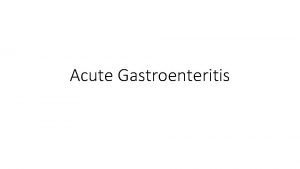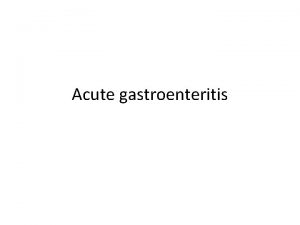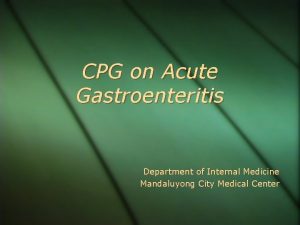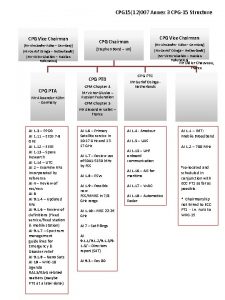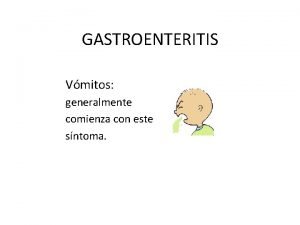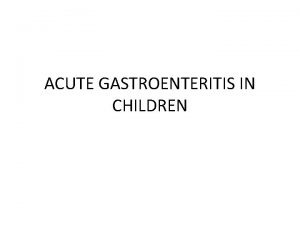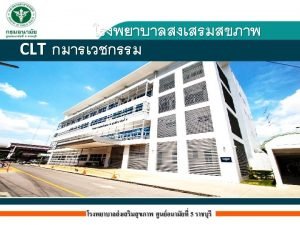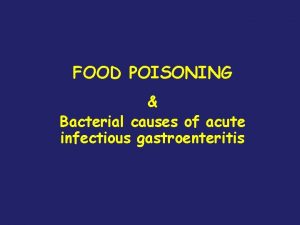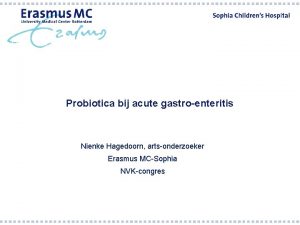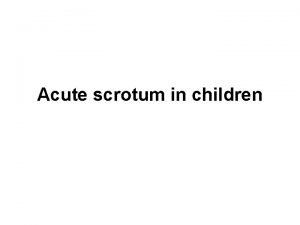CPG on Acute Gastroenteritis Acute Gastroenteritis Acute gastroenteritis



















- Slides: 19

CPG on Acute Gastroenteritis

Acute Gastroenteritis Acute gastroenteritis is a disease characterized by changes in the character and frequency of stool. It can be defined as the passage of a greater number of stools of decreased form from the normal lasting less than 14 days. Generally associated with other signs or symptoms including nausea, vomiting, abdominal pain and cramps, increase in intestinal gas-related complaints, fever, passage of bloody stools (dysentery), tenesmus (constant sensation of urge to move bowels), and fecal urgency. (1) Guidelines on acute infectious diarrhea in adults. The Practice Parameters Committee of the American College of Gastroenterology. American Journal of Gastroenterology. 1997 Nov; 92(11): 1962 -75.

Acute Gastroenteritis Perform initial assessment Dehydration Duration (>1 day) Inflammation (indicated by fever, presence of blood in stool, tenesmus) (2) Acute Infectious Diarrhea. Nathan M. Thielman, M. D. , M. P. H. , and Richard L. Guerrant, M. D. The New England Journal of Medicine. 2004; 350: 38 -47.

Acute Gastroenteritis Complete blood count can be obtained to look for anemia, hemoconcentration, or an abnormal white blood cell count. (4) Measurements of serum electrolyte concentrations and blood urea nitrogen and serum creatinine levels can be used to determine the extent of fluid and electrolyte depletion and its effect on renal function. (4) Sleisenger and Fordtran’s Gastrointestinal and Liver Disease. 8 th edition. 2006. Feldman, Mark MD. Volume II. p 169.

Acute Gastroenteritis Provide symptomatic treatment Rehydration Treatment of symptoms (if necessary, loperamide if diarrhea is not inflammatory or bloody) (2) Acute Infectious Diarrhea. Nathan M. Thielman, M. D. , M. P. H. , and Richard L. Guerrant, M. D. The New England Journal of Medicine. 2004; 350: 38 -47

Acute Gastroenteritis Initial rehydration The most common risk with diarrheal illnesses is dehydration. The critical initial treatment must include rehydration, which can be accomplished with an oral glucose or starch-containing electrolyte solution in the vast majority of cases. Although many patients with mild diarrhea can prevent dehydration by ingesting extra fluids (such as clear juices and soups), more severe diarrhea, postural lightheadedness, and reduced urination signify the need for more rehydration fluids. (2) Acute Infectious Diarrhea. Nathan M. Thielman, M. D. , M. P. H. , and Richard L. Guerrant, M. D. The New England Journal of Medicine. 2004; 350: 38 -47.

Acute Gastroenteritis Prevention of Dehydration It is recommended that continued use of the patient’s preferred, usual, and appropriate diet be encouraged to prevent or limit dehydration. Regular diets are generally more effective than restricted and progressive diets, and in numerous trials have consistently produced a reduction in the duration of diarrhea. (5) Cincinnati Children’s Hospital Medical Center. Evidence-based clinical care guideline for acute gastroenteritis (AGE) in children aged 2 months through 5 years. Cincinnati (OH): Cincinnati Children’s Hospital Medical Center; 2006 May. 15 p. [50 references].

Acute Gastroenteritis The use of BRAT diet (consisting of bananas, rice, apple, and toast) with avoidance of milk products (since a transient lactase deficiency may occur) is commonly recommended, although supporting data are limited. (3) Clear liquids are not recommended as a substitute for oral rehydration solutions (ORS) or regular diets in the prevention or therapy of dehydration. (5) (3) Practice Guidelines for the Management of Infectious Diarrhea. Infectious diseases Society of America. Clinical Infectious Diseases 2001; 32: 331– 50. (5) Cincinnati Children’s Hospital Medical Center. Evidence-based clinical care guideline for acute gastroenteritis (AGE) in children aged 2 months through 5 years. Cincinnati (OH): Cincinnati Children’s Hospital Medical Center; 2006 May. 15 p. [50 references].

Acute Gastroenteritis Oral Feeding Following Rehydration > It is recommended that giving the patient’s usual diet be started at the earliest opportunity after an adequate degree of rehydration is achieved. (5) On-going IV or NG Fluids following Rehydration > It is recommended that maintenance IV fluids or NG ORS be given: – • when unable to replace the estimated fluid deficit and keep up with the on-going losses using oral feedings alone, and/or – • to severely dehydrated patient with obtunded mental status (5) Cincinnati Children’s Hospital Medical Center. Evidence-based clinical care guideline for acute gastroenteritis (AGE) in children aged 2 months through 5 years. Cincinnati (OH): Cincinnati Children’s Hospital Medical Center; 2006 May. 15 p. [50 references].

Acute Gastroenteritis Stratify subsequent management according to clinical and epidemiologic features Epidemiologic clues: Food, antibiotics, sexual activity, travel, day-care attendance, other illnesses outbreaks, season Clinical clues: Bloody diarrhea, abdominal pain, dysentery, wasting, fecal inflammation. (2) Acute Infectious Diarrhea. Nathan M. Thielman, M. D. , M. P. H. , and Richard L. Guerrant, M. D. The New England Journal of Medicine. 2004; 350: 38 -47

Acute Gastroenteritis When to admit? Unstable Severely dehydrated Bloody diarrhea Persistent Vomiting No improvement after initial hydration or symptoms exacerbate/ overall condition gets worse (6) World Gastroenterology Organisation (WGO). WGO practice guideline: acute diarrhea. Munich, Germany: World Gastroenterology Organisation (WGO); 2008 Mar.

(2) Acute Infectious Diarrhea. Nathan M. Thielman, M. D. , M. P. H. , and Richard L. Guerrant, M. D. The New England Journal of Medicine. 2004; 350: 38 -47

(2) Acute Infectious Diarrhea. Nathan M. Thielman, M. D. , M. P. H. , and Richard L. Guerrant, M. D. The New England Journal of Medicine. 2004; 350: 38 -47

Immunocompromised patients If symptoms recur or are uncontrolled despite hydration and antimicrobial treatment. . If evidence of colitis is present, Do: – Proctosigmoidoscopy with biopsy of lesions with attention to CMV, mycobacteria, Adenovirus, Fungi, Herpes simplex (1) Guidelines on acute infectious diarrhea in adults. The Practice Parameters Committee of the American College of Gastroenterology. American Journal of Gastroenterology. 1997 Nov; 92(11): 1962 -75.

Immunocompromised patients If symptoms recur or are uncontrolled despite hydration and antimicrobial treatment. . If evidence of colitis is NOT present, Do: -Gastroduodenoscopy with biopsy, Smears and culture for special parasites plus proctosigmoidoscopy (1) Guidelines on acute infectious diarrhea in adults. The Practice Parameters Committee of the American College of Gastroenterology. American Journal of Gastroenterology. 1997 Nov; 92(11): 1962 -75.

Acute Gastroenteritis When to discharge? – Stable Vital signs – Maintains a sufficient fluid intake – Able to eat meals adequately – Able to take medications (if still indicated)

Patient Education Many diarrheal diseases can be prevented by following simple rules of personal hygiene and safe food preparation. Hand-washing with soap is an effective step in preventing spread of illness and should be emphasized for caregivers of persons with diarrheal illnesses. As noted above, human feces must always be considered potentially hazardous, whether or not diarrhea or potential pathogens have been identified. (3) Practice Guidelines for the Management of Infectious Diarrhea. Infectious diseases Society of America. Clinical Infectious Diseases 2001; 32: 331– 50.

Patient Education Consequently, microbial studies should not be needed to justify careful attention to hygiene. Select populations may require additional education about food safety, and health care providers can play an important role in providing this information. (3) Practice Guidelines for the Management of Infectious Diarrhea. Infectious diseases Society of America. Clinical Infectious Diseases 2001; 32: 331– 50.

THANK YOU!
 Suscestible
Suscestible Wbs
Wbs Ambulance tasmania cpg
Ambulance tasmania cpg Isup cpg
Isup cpg Dyslipidemia cpg
Dyslipidemia cpg Hypoglycemia cpg
Hypoglycemia cpg Lystatin
Lystatin Cpg on fhir
Cpg on fhir Gastroenteritis at a university in texas
Gastroenteritis at a university in texas The element at the beginning of a medical term is known as
The element at the beginning of a medical term is known as Gastroenteritis adalah
Gastroenteritis adalah Komorditet
Komorditet Shigellosis causative agent
Shigellosis causative agent Viral gastroenteritis
Viral gastroenteritis Gastroenteritis suffix
Gastroenteritis suffix Rotatest
Rotatest Akutni gastroenteritis
Akutni gastroenteritis Gastroenteritis bacterial
Gastroenteritis bacterial Promyelocytic
Promyelocytic Treatments for acute renal failure
Treatments for acute renal failure
